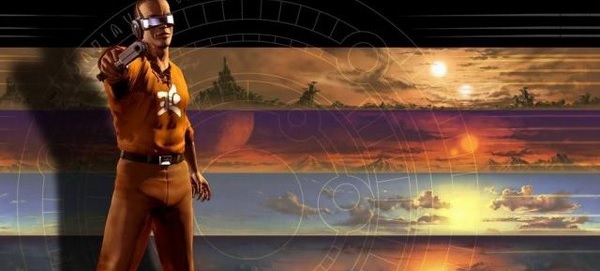Yann Robert, Franck Sauer and Yves Grolet announced today that they have signed and closed an asset purchase agreement with Atari Europe SAS recently regarding Outcast intellectual property.
Yann, Franck and Yves, the three founders of Appeal S.A., the studio that developed Outcast, have started the revival of the franchise and will soon announce further developments.
Yes yes, you read that right; Outcast will be revived and the trio will announce more news about later this year – hopefully.
According to Wikipedia, Outcast’s graphics engine is mainly a combination of a ray casting (heightmap) engine, used to render the landscape, and a texture mapping polygon engine used to render objects.
“Although Outcast is often cited as a forerunner of voxel technology, this is somewhat misleading. The game does not actually model three-dimensional volumes of voxels. Instead, it models the ground as a surface, which may be seen as being made up of voxels. The ground is decorated with objects that are modeled using texturemapped polygons. When Outcast was developed, the term “voxel engine”, when applied to computer games, commonly referred to a ray casting engine (for example the VoxelSpace engine). On the “Engine Technology” page of the game’s website, the landscape engine is also referred to as the “Voxels engine”. The engine is purely software-based; it does not rely on hardware-acceleration via a 3D graphics card.
Outcast features effects such as character shadows, depth of field, bump mapping and reflections. Anti-aliasing is used to smooth certain texture boundaries. The heightmap engine renders reliefs with self-occlusion, motion parallax, andsilhouettes (but no shadowing)–even for details such as cobblestones. Water surfaces appear both translucent and reflective. The surface appears to reflect the environment (the skybox) and appears rippled with moving waves, which react to the character’s movement while in the water. The degree of translucency depends on the viewing angle. The more vertical the angle, the clearer the water appears while the more horizontal the angle, the stronger the reflections.
Other visual effects include bloom and lens flares, falling snow, fire, and other glowing particles. All of these taken together would have crippled even the most advanced graphics card at the time of release. As a result, the graphics were considered beautiful and well ahead of their time upon Outcast’s release. The disadvantage of this type of CPU-intensive software-rendering was that Outcast required an extremely powerful CPU (nothing but the most powerful Intel Pentium III processors of the time, in the 500-600 MHz range) and massive amounts of RAM (128 megabytes were recommended) to run at full speed and maximum resolution (512×384).”
Outcast was a third-person action-adventure game that was developed by Appeal and was released for Windows in 1999. In this game, players took the role of a former U.S. Navy SEAL Cutter Slade, Slade is given the job of escorting three scientists on a mission to this alien world to recover the probe and close the black hole. Arriving in this alien world, Cutter is separated from the other scientists and is hailed by the natives as their messiah, the Ulukai. Thus, his adventures begin.
We’ll be sure to keep you posted with any news we get about the revival of Outcast, so stay tuned!

John is the founder and Editor in Chief at DSOGaming. He is a PC gaming fan and highly supports the modding and indie communities. Before creating DSOGaming, John worked on numerous gaming websites. While he is a die-hard PC gamer, his gaming roots can be found on consoles. John loved – and still does – the 16-bit consoles, and considers SNES to be one of the best consoles. Still, the PC platform won him over consoles. That was mainly due to 3DFX and its iconic dedicated 3D accelerator graphics card, Voodoo 2. John has also written a higher degree thesis on the “The Evolution of PC graphics cards.”
Contact: Email

